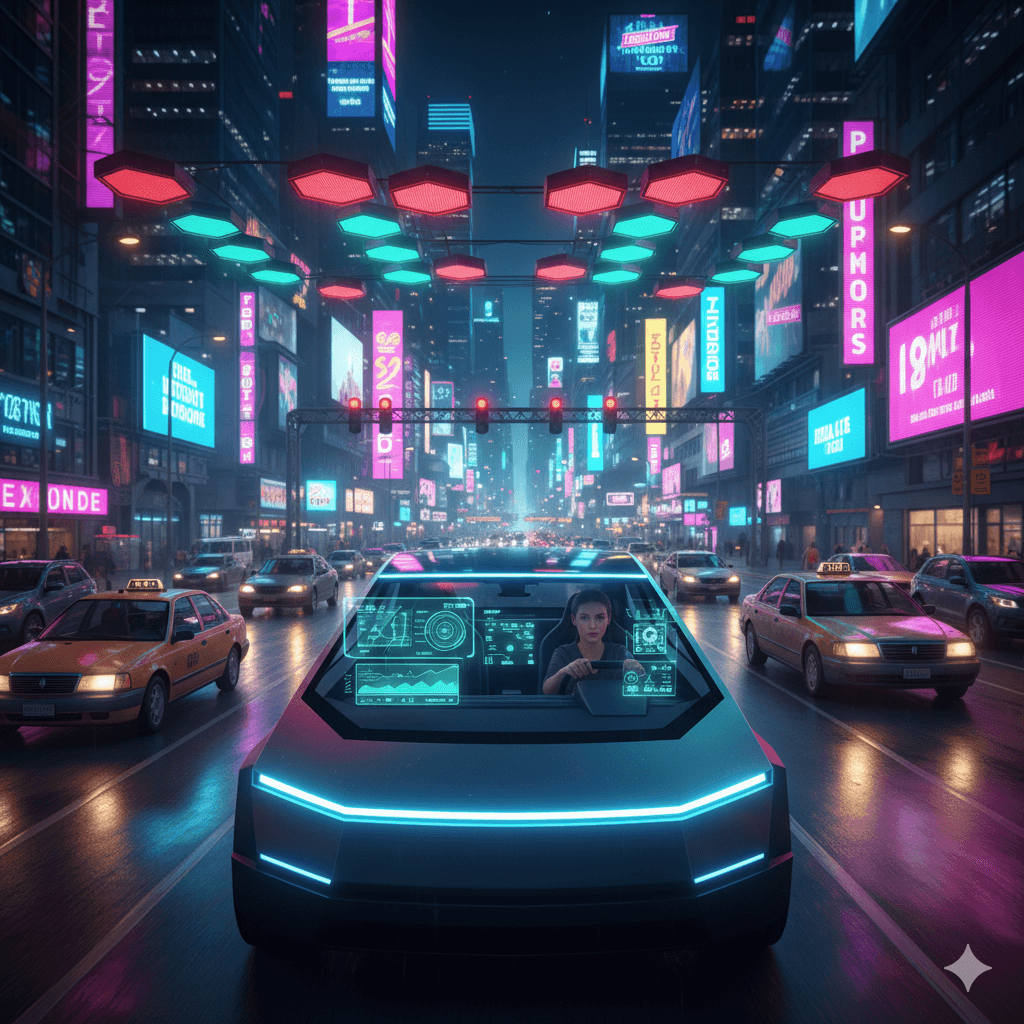AI-Powered Cars: The Future of Transportation Is Already Here

Introduction
The automotive industry is undergoing its biggest transformation in decades. Artificial intelligence (AI) is no longer just powering our voice assistants and navigation apps — it is becoming the very brain of modern cars. Today, self-driving vehicles are already being tested in China, the U.S., and Europe, while automakers are investing billions into AI technologies that promise to change the way we travel.
But is the future of AI-powered transportation really that close? And what should drivers expect in the coming years?
Table of Contents
- What Is an AI-Powered Car
- How Smart Autopilot Works
- Top 5 AI Technologies in Cars
- Pros and Cons of AI Transportation
- Companies and Projects Leading the Way
- When to Expect Mass Adoption
- Conclusion
What Is an AI-Powered Car
An AI-powered car is a vehicle equipped with artificial intelligence systems that:
- analyze road conditions,
- predict the behavior of pedestrians and other vehicles,
- control acceleration, braking, and steering,
- interact with the driver via voice or smart interfaces.
📌 These cars are already partially available: Tesla Autopilot, Mercedes Drive Pilot, BYD systems, and even Yandex self-driving taxis.
How Smart Autopilot Works
AI in cars is not “magic” — it’s a combination of technologies:
- Computer vision — cameras detect traffic lights, lanes, and pedestrians.
- LIDAR and radars — build a 3D map of the surroundings.
- Neural networks — make decisions based on millions of driving hours.
- Big Data — constant learning from real-world road scenarios worldwide.
💡 In essence, an AI car “sees” better than a human driver but can still struggle with rare, unpredictable cases (like a pedestrian in a dinosaur costume).
Top 5 AI Technologies in Cars
|
🛠 Technology |
🚗 What It Does |
💡 Example |
|
Autopilot (self-driving) |
Drives the car without human input |
Tesla FSD, Waymo |
|
Driver assistance |
Lane keeping, adaptive speed, braking |
Mercedes Drive Pilot |
|
Voice assistant |
Communicates with the driver |
BMW with Alexa |
|
Predictive maintenance |
Predicts breakdowns |
Volvo AI Maintenance |
|
Smart navigation |
Optimizes route in real-time |
Yandex Navigator, Google Maps AI |
Pros and Cons of AI Transportation
✅ Advantages
- Fewer accidents thanks to reduced human error
- Fuel and time savings with smart navigation
- Accessibility for seniors and people with disabilities
❌ Disadvantages
- High implementation cost
- Risk of hacking and cyberattacks
- Legal uncertainty (who’s responsible in an AI-related accident?)
Companies and Projects Leading the Way
- Waymo (Google) — self-driving taxis in Arizona and San Francisco.
- Tesla FSD — the most debated autopilot system.
- BYD + Huawei — China’s leader in smart cars.
- Yandex Robotaxi — testing self-driving cabs in Moscow and Innopolis.
“The future is already here — it’s just not evenly distributed yet.”
— William Gibson, futurist author
When to Expect Mass Adoption
Analysts predict that:
- by 2030, over 30% of cars on the road will feature AI,
- taxis and freight will adopt AI faster than private cars,
- legislation will be the key factor shaping the speed of adoption.
Conclusion
AI-powered cars are no longer a futuristic experiment — they are becoming part of our everyday reality. Yes, challenges remain, from cybersecurity to legal frameworks, but in just a few years, taking a ride in a smart vehicle may feel as normal as carrying a smartphone in your pocket.
👉 Stay updated on the latest in AI-powered transportation at AIMarketWave and be among the first to embrace the freedom of intelligent mobility!
